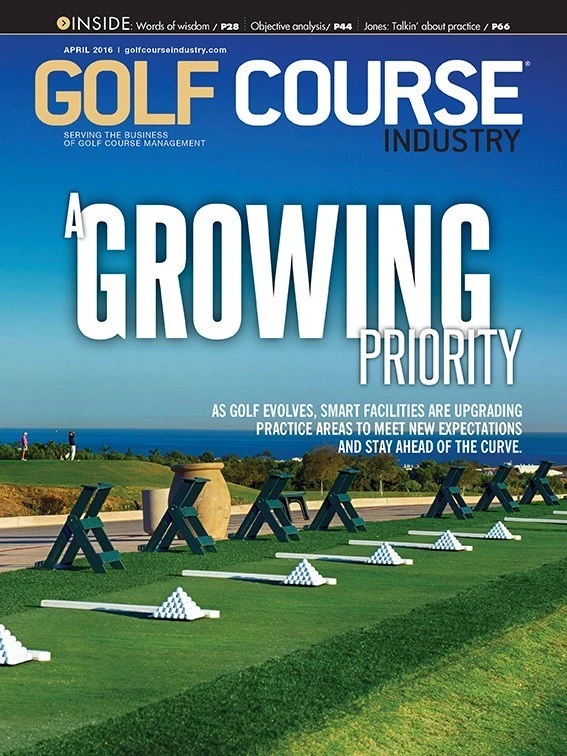Superintendents are dedicated, selfless and smart. They’re also sometimes misunderstood, not to mention underappreciated. Superintendents who want to improve the value and impact they have on their course or club can take four steps to increase their reputation and standing.
Work from a plan that is aligned with the club’s strategy
Whether your club is the fanciest private facility around or the most modest public course in the community, it must have a strategy for growth and success. And that strategy must be executed by following a plan. The strategy may be to invest in top agronomic practices to create the best-conditioned course in the area, or it may be to operate within a conservative budget to present above-average conditions and attract the value-conscious golfer. Both strategies are viable – the agronomic plan should be philosophically and financially aligned with the strategy.
Here are three examples for aligning your practices to plan:
- Cultural practices. Do your plans support the overall economic objective at your club for a break-even budget? If your course is an amenity at a resort or residential project, is it appealing to the untrained eye?
- Natural resource consumption. If the club’s strategy is to grow membership by practicing environmental responsibility, is your agronomic plan clear on your methods and practices supporting consumption of natural resources? If your course is situated on property dedicated by strategic plan or zoning requirement to high environmental standards, use the Audubon International resource model as a guide for Audubon Sanctuary certification.
- High-volume rounds played. If your course seeks to accommodate high volume, explain how your practices maximize the number of playable days and hours for golfers.
Establish clear-cut and measurable goals
Just as golfers know to post a score for each round, superintendents should tally their results for all to see. To do so, goals should be measurable – based on budgets, completion dates or rounds played. Set meaningful goals and post honest results. Most important, report to management how agronomic projects support its overall strategy.
Educate your staff and your golfers
Typically, superintendents are the most educated scientists at their clubs and are experienced in formulating and executing scientific processes. The same rigor that goes into carefully evaluating new turf types and pesticide solutions is needed for educating and training staff about the importance of the goals and objectives that are driving your work.
Training should include the ability to answer FAQs in simple non-scientific terms that members and customers understand. Make sure staff and your golfers understand how deliberate your agronomic plan is and why it is critical to the long-term health of the course. Emphasize your conscientious use of water, pesticides and labor dollars. See that your golfers know that everything you do has a purpose.
Communicate the benefits
Communications is one of the toughest duties for golf course superintendents, but that doesn’t mean you get a free pass on this critical responsibility. Bear in mind two important concepts used by communications experts:
Relationship marketing focuses on customer loyalty and long-term engagement rather than short-term goals, such as customer acquisition and individual sales. Develop meaningful relationships, so members and golfers understand how carefully you plan and how diligently your crew works. Conduct course walking tours, or host field days for interested members. Host “shop days” for children and let them sit on your maintenance equipment. You’ll love the smiles.
Content marketing focuses on creating and using interesting, informative and relevant information to clearly defined audiences. For example, your target audience is golfers and, if you’re successful, their friends. Your golfers want to know what you are doing to make the course better, more beautiful and more fun. Show them pictures of the course and your team at work, and help them understand how every task is designed to improve course conditions.
Plan, measure, educate and communicate. Then watch as your management, members and customers look at you and your staff with newfound appreciation.

Explore the April 2016 Issue
Check out more from this issue and find your next story to read.
Latest from Golf Course Industry
- From the publisher’s pen: Conscientious of a bigger role
- Bernhard and Company partners with Laguna Golf Phuket
- Terre Blanche showcases environmental stewardship
- VIDEO: Introducing our December issue
- Bernhard and Company introduces Soil Scout
- Nu-Pipe donates to GCSAA Foundation’s Centennial Campaign
- GCSAA enhances golf course BMP tool
- Melrose leadership programs sending 18 to 2026 GCSAA Conference and Trade Show





